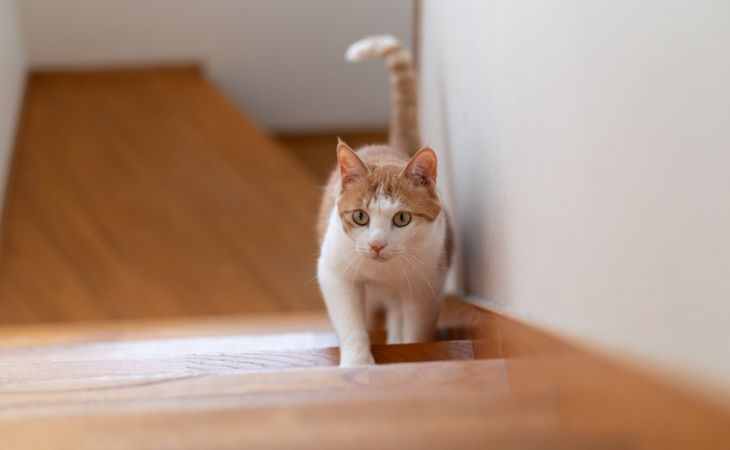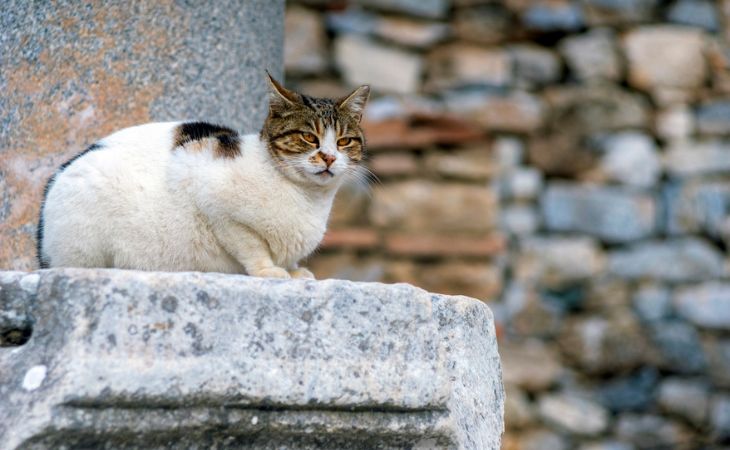The moggy, which is also referred to as a domestic cat or house cat, is a cat who does not have a known genealogical lineage. This is what differentiates them from purebred cats, who have retraceable origins. Despite the moggy’s absence of a standard, this type of cat is becoming more and more popular and seems to be more numerous than purebred cats. But where do these cats come from and what characterizes them? Read on and Letsgetpet will tell you everything you need to know about the moggy.
What does “moggy” really mean?
The word moggy is used to refer to a feline whose origins are not certain or known. This term is also used to refer to a cat who did not undergo genetic manipulation by humans. In other words, no selection was made to obtain precise particularities concerning this animal regarding this cat. The moggy does not have an official pedigree.
The origins of the moggy
The history of the moggy goes back to that of the domesticated wild cat in Egypt around 2600 years B.C. The common cat at the time was very appreciated for its ability to help regulate rat invasions in the rural areas. Many sources stipulate that the moggy is the offspring of the wild or semi-wild cat, but the moggy is actually a self-made breed.
Today, the moggy is more likely to be found in urban areas. Outside of houses in the countryside, you can find them around stables, barns, farmhouses and granaries. Over time, the moggy has also become a popular apartment cat around the world. At the moment, it is the most common type of cat in all of France.
Differences between the moggy and the European Shorthair
The moggy and European Shorthair are often confused. Despite this, there are differences between these two types of cats. Just like the Persian and Siamese cat, European Shorthairs have a pedigree. This is not the case for the moggy. The FIFe officially recognized the European Shorthair in 1983. Regarding the behavior of the two, the moggy is more independent than the European Shorthair.
What are the physical characteristics of the moggy?
Because of the absence of a pedigree, the moggy does not have specific physical characteristics. For examples, these cat can be:
- large or small,
- robust, long, or stocky body,
- triangular or round head,
- short or long hair,
- varied colored coat (marbled, striped, spotted, etc.)
Moggies can be broken down into three categories: the domestic cat, the feral cat, and the stray cat. As indicated by its name, the domestic cat lives with a family. The feral cat lives outside and depends on hunting to be able to feed themselves. The stray cat is actually a mix of the two. In general, they live outside, but can come to humans from time to time for food.
A moggy can weigh on average between 3 and 7 kg (6.6 to 15.4 lb) or more. Cats that are not spayed or neutered will often have a larger head and some females have a thinner morphology. When it comes to their health, no specific disease is linked to this feline, but road accidents can happen. They can get hurt by playing or fighting with another animal.
The moggy can also suffer from hypertrophic cardiomyopathy and coryza if not vaccinated. Cats that like to eat can also develop obesity. As they come from wild cats or semi-wild cats, the moggy is in general more robust than a purebred cat. The oldest moggy cats can live around 20 years if they are well taken care of.

What is the behavior of the moggy?
Just as the physical characteristics vary for these cats and they develop different behavior depending on the individual and according to the environment. We do recognize, however, that they have an affectionate, gentle, and kind character, especially for domestic cats. Moggy cats can be more solitary and not like outpourings of love. Other individuals are also known for not being affectionate and capable of developing aggressive behavior.
Like all domestic animals, it is the education that forges the character of the moggy. Their personality depends on their experiences and relationship with humans and their environment. Early or late separation from their mother, their past, and weaning can also influence their behavior. As they were used in the past to make rodents stay away from their houses, the moggy is particularly fond of walks on the roof and gutters.
This cunning, resourceful and adventurous cat is also fragile. Dominant, playful, affectionate, they can present all types of personality. Even if they do not have a genealogical line, this cat does not lack strengths. They have a remarkable presence and are almost indispensable for their owner. It’s a cat that likes to hunt mice, birds, and even lizards.
How do you take care of a moggy?
You need to assure suitable and regular care for your moggy to preserve their health. This concerns grooming and food.
Grooming
To groom this common cat, you need to start with taking care of their coat. This depends on the nature of their hair. If they have a short coat, they generally need less care than long haired cats. Weekly brushing is enough for this animal. Do not forget however to keep an eye on the appearance of dental tartar. Dental scaling of this feline can be covered by pet health insurance.
Food
Ideally, choose good quality kibble and wet food. You can use wet cat food for your cat that is very practical. You should ask for advice from a vet to adapt the daily ration to your cat’s needs. It’s best not to give milk to adult moggy cats who have a hard time digesting lactose.
You might find this article interesting: Understanding the nutritional needs of cats
How do I be a good owner for a moggy?
The moggy is a cat that adapts well to almost all environments:
- countryside,
- city,
- apartment,
- house, etc.
Some cats like to nap on a cat tree or close to heaters. Others on the other hand like to walk and jump from the balcony of the apartment. To be a good pet parent for a moggy, you need to take care of their character and needs.
You need to learn to give them moments of calm by giving them caresses and hugs. Daily playtime is also important for the well-being of the animal. Respect, however, their need for independence when they ask for it. It is most often a good companion for a family with children or an elderly person. They can live with another cat or dog if you present them early and they treat them properly.

